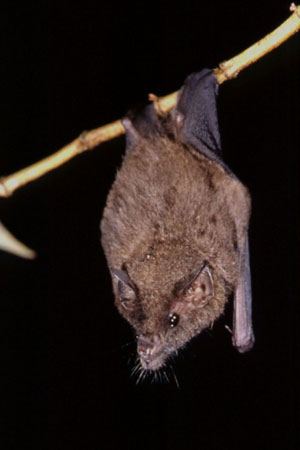Hi everyone! I hope you all had a good week! I am excited because I have a four-day weekend! Yay!
I was doing some research and found something interesting. Most of the plants that nectar-drinking bats eat from have evolved to reflect ultrasonic waves. This makes it easier for the bats to find them when they echolocate. However, there is a plant from the Ecuadorian Andes mountains that absorbs the waves. The plant, Espostoa frutescens, is a cactus with small flowers that open during the night and is mainly populated by the Geoffroy’s tailless bat. These bats are adorable and have elongated noses and a long tongues for getting to the center of flowers. Bats are very important when it comes to being pollinators. They carry the pollen from one flower to the next, spreading it as they fly, much like bees and butterflies.
Bats use echolocation to find their food. For nectar bats this means finding the most attractive flower. In order to attract more bats, and continue surviving, plants have evolved to have many different attributes that are easy to see with echolocation. These include making their petals concave and having a reflecting surface that bounces more echolocation. The Espostoa frutescens flowers are surrounded by wooly hairs called cephalium which protect cactuses from UV rays, drying out, getting to cold, even being eaten. These hairs grow on many cactuses and happen to be sound absorbent. In order to see if this effected how the plant attracts bats scientists attached a microphone to a device that was shaped like a bat head and played echolocation sounds in order to see what was reflected back at the “bat.” The hairs absorbed the ultrasound above 90 kHz in the range of the Geoffroy’s tailless bat call. This makes the image that bounces back quite different. The hair surrounded area was 14 decibels quieter than the non-hairy part of the cactus! The image the bats get has a darker background (hairs) with a bright and vibrant flower in the middle! The other flowers simply make the flower brighter which can get lost in the cactus.
If you want to read more about this study you can do so here.
